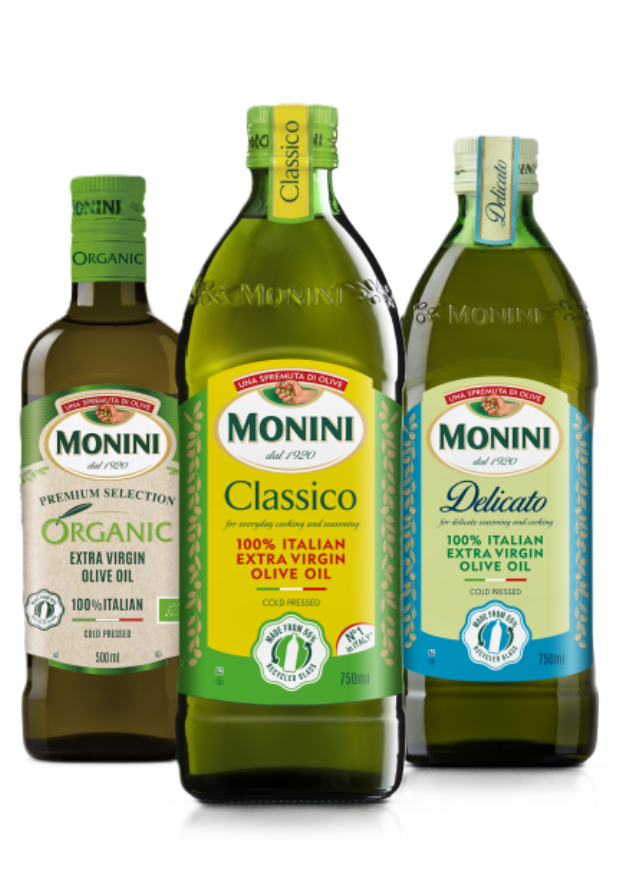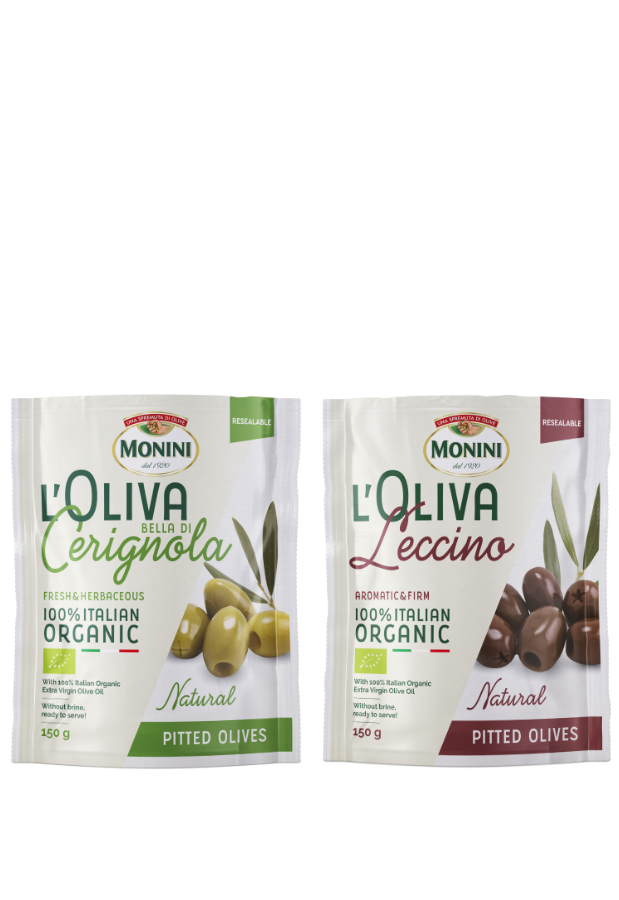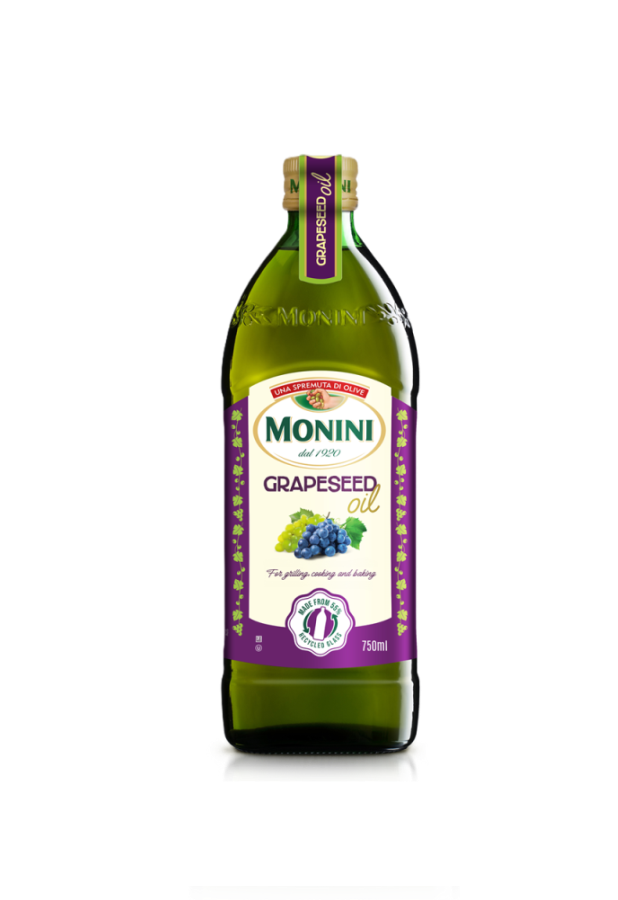THE CLASSIFICATION OF OILS
VIRGIN OLIVE OILS
They are oils obtained from olives by mechanical or other physical processes, in conditions that prevent any changes to the oil.
Based on their acidity, they can be divided in:
1. Extra-virgin olive oil, with maximum free acidity of 0.8%
2. Virgin olive oil, with maximum free acidity of 2%
3. Lampante olive oil, with free acidity above 2%, which requires a refining process before it can be consumed.
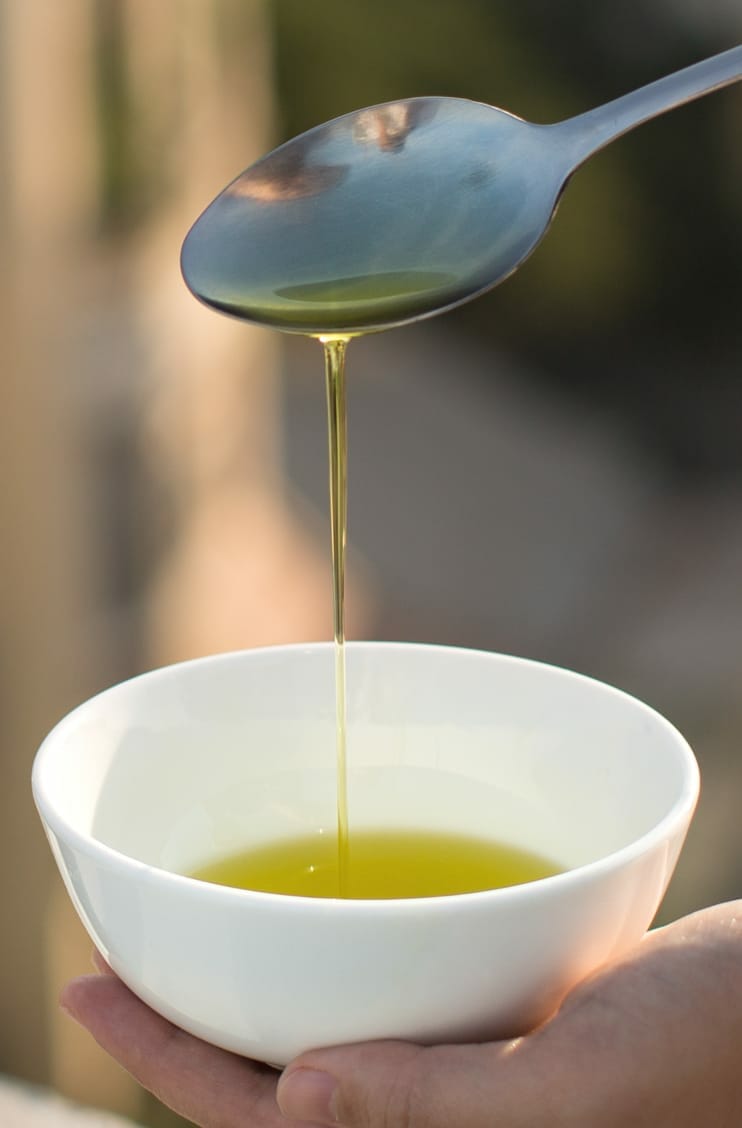
OLIVE OIL
Any blend of refined and extra-virgin or virgin olive oils, which by law has a maximum free acidity of 1%.
Due to its characteristics it is recommended for frying, as a suitable substitute of vegetable oils, or for cooking food.
REFINED OLIVE OIL
Although it has the same fatty acid content as olive oils, refined or rectified oil is odourless, colourless and tasteless, with no beneficial substances such as polyphenols, and can be sold only in bulk.
It can be obtained by an industrial refining process that lowers its acidity to the set threshold of 0.3%, eliminates any oxidised substances and corrects the organoleptic defects of the oils it derives from.
OLIVE POMACE OIL
It is an oil extracted by means of a solvent from the dried residue of freshly crushed olives. After an industrial refining process it is blended with edible virgin or extra-virgin oils, in any proportion. By law, the acidity of pomace oils cannot be above 1%.
CRUDE OLIVE POMACE OIL
This oil is extracted by means of a solvent or by other mechanical process from the crushed olives, and must undergo a refining process.
REFINED OLIVE POMACE OIL
It is obtained from refining crude olive pomace oil and can reach a free acidity level of 0.3%. Refined pomace oil can be sold only in bulk.
VEGETABLE OILS
These include all oils extracted from oily seeds by means of a solvent and subsequently refined. The seeds are first dried, then milled, mixed with hexane (the same procedure as pomace oils), and finally refined
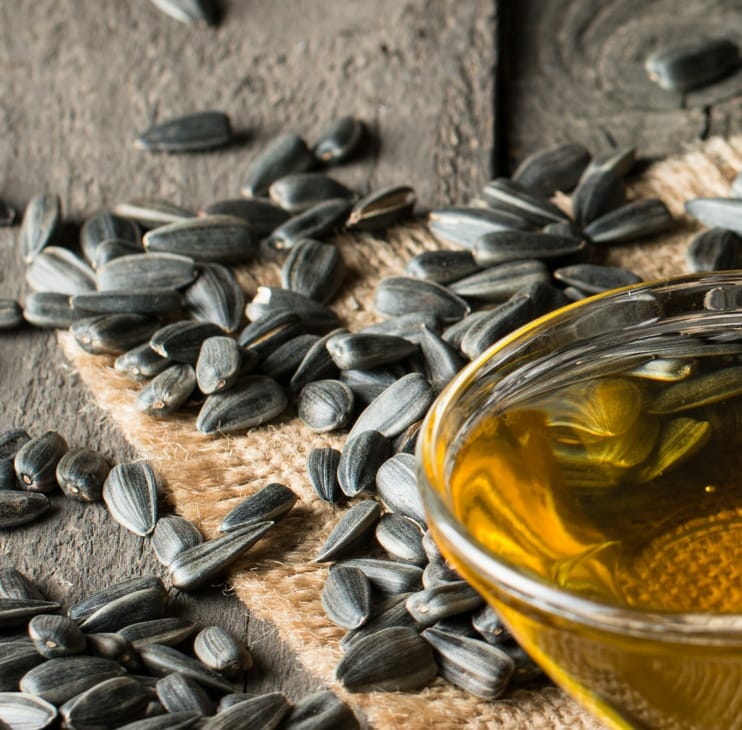
OTHERS OILS
THE REFINING PROCESS
Oils that are not classified as extra-virgin or virgin, namely lampante oils, can only be used after an industrial process, called refining or rectifying, that corrects their acidity and organoleptic defects. The refining process consists of three steps:
1. Deacidification
Oil is processed with a caustic soda solution, which binds to the free fatty acids forming soap. Then the oil is washed with water to melt the soap and achieve a neutralised or deacidified oil.
2. Bleaching
The oxidised substances of lampante oils are eliminated by combining the oil with activated charcoal or bleaching earths. At the end of this step the oil is bright yellow, a colour similar to common vegetable oils.
3. Deodorising
To remove any unpleasant odour, the oil is brought to a high vacuum temperature of 230ºC. At the end of this process, the rectified oil is virtually odourless and is left with a slight almond flavour.
EXTRACTION PROCESS BY SOLVENT
Virgin pomace, or the dried residue from the crushed olives, still contains a minimal quantity of oil; to extract it, the pomace goes to extraction plants where it undergoes a preliminary drying process.
First, the dried pomace is mixed with hexane, a solvent that facilitates the dissolution of all remaining oil and the separation of the solids from the liquid portion, called hexanol.
The hexanol is then distilled to separate the solvent and obtain the crude pomace oil, which is characterised by a naturally high acidity, unpleasant taste and the presence of all the oxidised substances that formed during the period of storage of the pomace. To become edible it must undergo a refining process to obtain refined olive pomace oil.
QUALITY AND PURITY OF OILS
With EEC Regulation 2568 of 1991, the European Community defined the quality and purity characteristics that every olive and pomace oil must have, it regulated analysis methods valid for all countries and it set the values of the parameters used to identify olive oil and its product categories.
Over the years several changes have been made, particularly Regulation 61/2011, which for the first time introduced the application of a sensory method to the assessment of oils, the Panel Test.
EUROPEAN REGULATIONS
EEC Regulation 29/2012 determines the compulsory and optional information to include on olive oil labels, supplementing the general rules relating to foodstuffs and their marketing in EEC Regulation 2000/2013.
DESIGNATION OF ORIGIN:
By law, the front label of extra-virgin and virgin olive oils must bear the name of the country of origin, e.g. “100% Italian”, “Made in Italy”, “Product of Spain”, “100% Tunisia”, etc.

COMPULSORY INFORMATION
For extra-virgin olive oil the following wording must appear on the label: “Superior category olive oil obtained directly from olives and solely by mechanical means.”
For virgin olive oil: “Olive oil obtained directly from olives and solely by mechanical means.”
For olive oil made with refined and virgin oils: “Oil comprising exclusively olive oils that have undergone refining and oils obtained directly from olives.”
For olive pomace oil: “oil comprising exclusively oils obtained by treating the product obtained after the extraction of olive oil and oils obtained directly from olives”, or “oil comprising exclusively oils obtained by processing olive pomace and oils obtained directly from olives.”
In the case of blends of oils from different countries, the label must say, depending on the case: “From olives harvested and processed in the European Union”, “Blend of olive oils of European Union origin”, “blend of olive oils of European Union origin and not of European Union origin”, “Origin: European Union and non-European Union”.
OPTIONAL INFORMATION
Some of the information on the label is subject to specific rules and restrictions.
Those are:
Organoleptic Characteristics: the use of certain terms such as Fruity, Ripely Fruity, Greenly Fruity, Bitter, Pungent (in their various degrees), Well-Balanced Oil, and Mild Oil are subject to assessment and certification by panel test.

